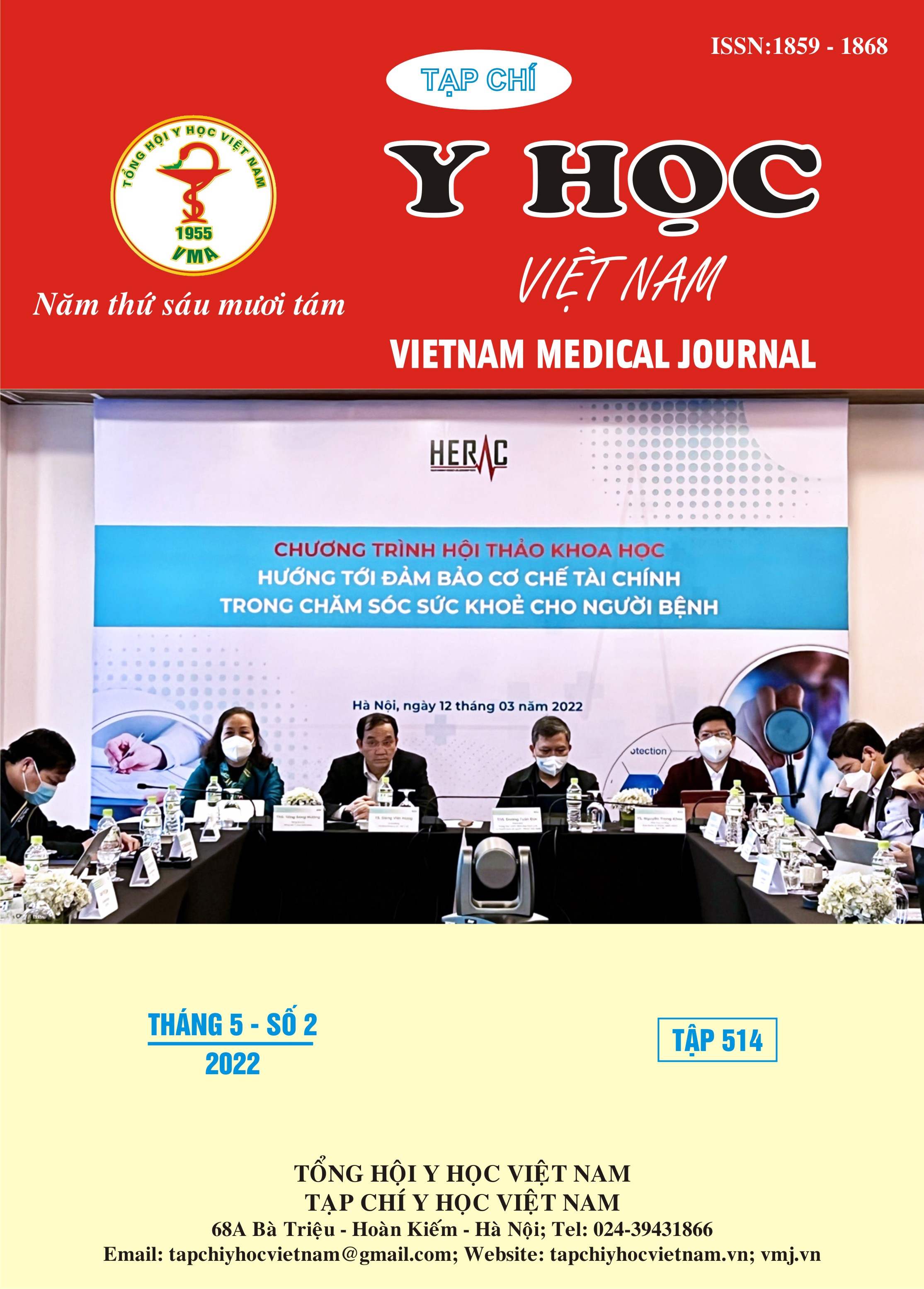RESULTS OF TREATMENT DUCTAL CARCINOMA IN SITU OF BREAST CANCER AT K HOSPITAL
Main Article Content
Abstract
Objectives: To evaluate results of treatment ductal carcinoma in situ of breast cancer at K hospital. Patients and methods: Retrospectivedescription of 78 patients with ductalcarcinoma in situ of breast cancer operatedat the Department of Breast Surgery - K Hospitalfrom January 2014 to October 2017. Results: The most common tumor location was the upper outer quadrant of the breast with 43.6%. Tumour size ≤25mm accounts for 83.3%. Intermediate-grade DCIS accounted for 52.6%; the percentage of estrogen receptor-positive was 55.1%. The mastectomy and breast-conservingsurgery rateswere 83.3% and 16.7%, respectively. Complications were found in 10.2%. The proportion of patients receiving endocrine therapy was 55.1%, and adjuvant radiation therapy was 15.4%. No recurrence and metastasis. Conclusion: Treatment of ductal carcinoma in situ of breast cancer including surgery, radiotherapy, and endocrine therapy provides good results, low surgical complications, and requires long-term follow-up to evaluate recurrence and metastasis.
Article Details
Keywords
breast cancer, ductal carcinoma in situ
References
2. Kerlikowske K. (2010). Epidemiology of Ductal Carcinoma In Situ. J Natl Cancer Inst Monogr, 2010(41), 139–141.
3. Li C.I., Daling J.R., and Malone K.E. (2005). Age-specific incidence rates of in situ breast carcinomas by histologic type, 1980 to 2001. Cancer Epidemiol Biomarkers Prev, 14(4), 1008–1011.
4. Rummel S., Hueman M.T., Costantino N., et al. (2015). Tumour location within the breast: Does tumour site have prognostic ability?. Ecancermedicalscience, 9, 552.
5. Cheng L., Al-Kaisi N.K., Gordon N.H., et al. (1997). Relationship between the size and margin status of ductal carcinoma in situ of the breast and residual disease. J Natl Cancer Inst, 89(18), 1356–1360.
6. Adjuvant Tamoxifen Reduces Subsequent Breast Cancer in Women With Estrogen Receptor–Positive Ductal Carcinoma in Situ: A Study Based on NSABP Protocol B-24 | Journal of Clinical Oncology. , accessed: 03/20/2022.
7. Vargas C., Kestin L., Go N., et al. (2005). Factors associated with local recurrence and cause-specific survival in patients with ductal carcinoma in situ of the breast treated with breast-conserving therapy or mastectomy. Int J Radiat Oncol Biol Phys, 63(5), 1514–1521.
8. Wapnir I.L., Dignam J.J., Fisher B., et al. (2011). Long-Term Outcomes of Invasive Ipsilateral Breast Tumor Recurrences After Lumpectomy in NSABP B-17 and B-24 Randomized Clinical Trials for DCIS. J Natl Cancer Inst, 103(6), 478–488.
9. Narod S.A., Iqbal J., Giannakeas V., et al. (2015). Breast Cancer Mortality After a Diagnosis of Ductal Carcinoma In Situ. JAMA Oncol, 1(7), 888–896.


